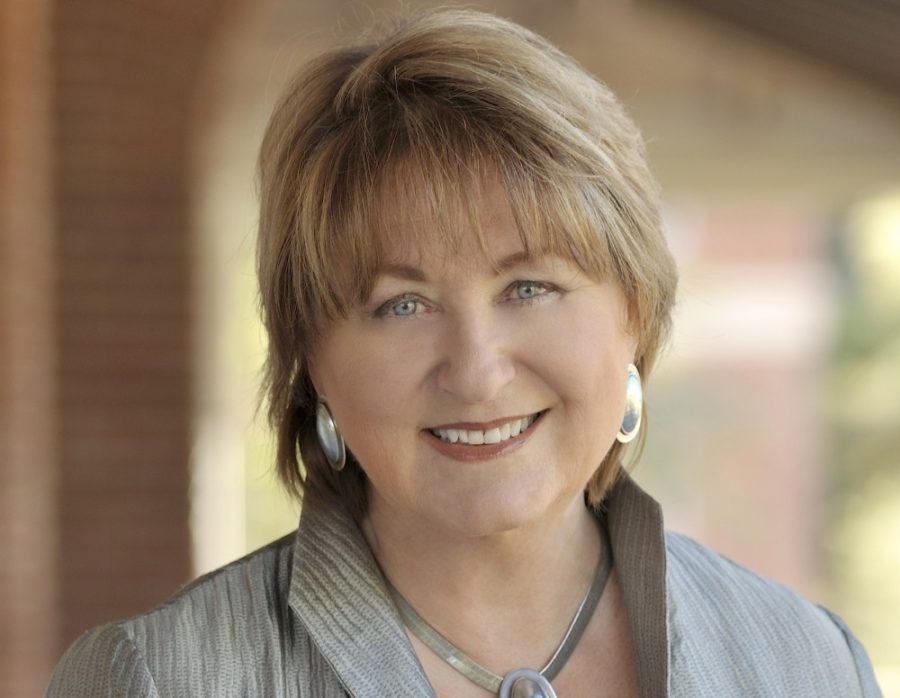University of Arizona President Ann Weaver Hart answered several questions via email. The UA’s 21st president took office in July 2012. In preparation for the upcoming fall semester, the Daily Wildcat discussed the UA’s past, present and future with President Hart.
Q: Where do you see [the] UA 10 years from now in terms of growth and evolution?
A: The University of Arizona will be at the forefront of creating a viable and dynamic new future for the land-grant university by:
1) growing slowly and thoughtfully in response to Arizona’s needs with a much larger proportion of overall learning taking place within alternative formats, such as online classes;
2) shaping the 21st century future within our land-grant mission to serve the citizens of the state of Arizona, our nation and the world by ensuring that knowledge contributes to the economic, social and cultural well-being of citizens, with particular responsibility for agriculture and the use of the land;
3) providing top-quality undergraduate education and top-flight residential experience: the UA was just named one of America’s top universities for undergraduate education by Princeton Review;
4) advancing our research eminence—the UA is a top 20 public university for research and member of the Association of American Universities—while continuing to provide Top 10 graduate programs in many fields; and
5) remaining at the highest levels of competition in university athletics with particular attention to the student-athlete and fan experiences, ethics, and sportsmanship while advancing new, financially sustainable models for collegiate athletics.
Q: What do you do in your free time to enjoy the summer months in Tucson?
A: We enjoy our own yard! I often find it a quiet (although very warm) place and enjoy the sunshine, climate and reading. It’s much like getting away without the hassle of travel. We also love the monsoon, the Sonoran Desert, and the surrounding mountains.
Q: How have programs like Never Settle and the 100% Engagement initiative helped contribute to the expansion and success of the university?
A: The Never Settle academic and business plan is designed to enhance core aspects of our super land-grant identity, and student engagement is a critical priority. The UA has never been a place for ivory towers. Instead, we are part of an institution that sees learning as a vital imperative to improve the world around us, which is why the UA is fostering an academic culture that can translate discoveries and insights into tangible benefits for the many communities we serve.
Q: What is a common misconception about the UA?
A: That the UA has “arrived” so that the highest levels of achievement are a foregone conclusion and easier for us than for others. The University of Arizona is exceptional; [and] the University of Arizona is the place it is because of the incredible work and accomplishments of all the people who are a part of it! A university is not defined so much by what has happened in its past, but what happens every day. The continuing hard work and excellence of students, faculty and staff are the biggest part of our success.
Q: Why did you choose the position of UA president?
A: Few public universities exist in the United States where a leader can be at the head of a land-grant, top 20 public research university that is a member of the Association of American Universities, with two medical schools, and top-tier intercollegiate athletics as part of a comprehensive cultural and school spirit experience where the values of the university are highlighted and advanced. The chance to be president of the University of Arizona presented this kind of opportunity for me. There may be as few as a dozen places like the UA in the whole country.
Q: Where is your favorite place to eat on campus?
A: My office!
Q: What’s the biggest difference at [the] UA compared to five years ago?
A: One of the biggest differences between the University of Arizona now and five years ago is the increased competition with other public, private and for-profit institutions in an environment of shrinking public resources that support the core mission of the university. Consequently, the university as a community must:
1) attend to the highest quality in all areas of endeavor;
2) flexibly and creatively innovate in learning, discovery, and knowledge development and translate knowledge into different ways of doing things in all aspects of human experience;
3) nurture the human spirit and creativity. And all of this must happen with increasingly reduced proportion of our scarce resources available to expend in support [of] the core activities of the university.
Q: Is there a message you wish to share with students before the fall semester starts?
A: Enjoy all that the University of Arizona has to offer during your time here. Hundreds of incredibly exciting areas for study, engagement and exploration are available here, and the university presents an opportunity that will not be available readily once you graduate.








